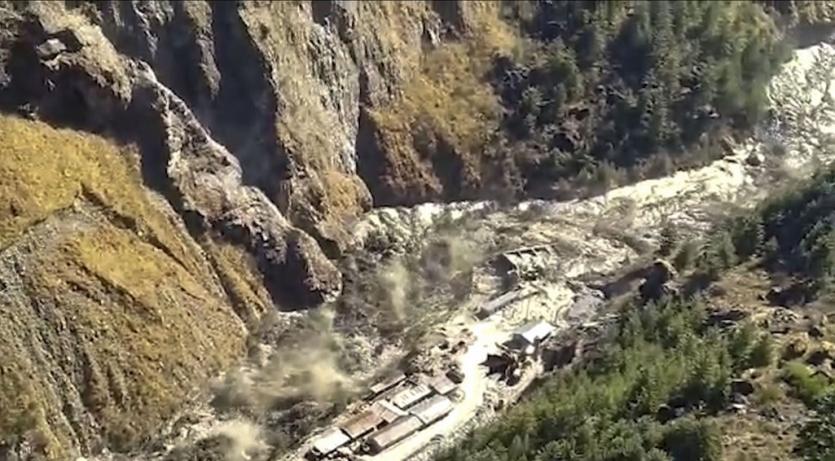Scores missing as Himalayan glacier bursts in northern India
By Patryk Krych | The World Daily | FEBRUARY 7th 2021
150 people are missing and feared dead in India's Northern Uttarakhand state, following the breaking of a Himalayan glacier that has led to severe flooding and the destruction of a hydroelectric dam on Sunday.
Many villages had to be evacuated after word had gotten out about a large Himalayan glacier that had partially broken apart and collapsed, causing an extreme tidal wave of flood to spread and even sweep away an entire hydroelectric dam in the region. Footage from the news agency Asian News International (ANI) revealed how the wave had crashed through the dam, sweeping up pieces of it on its way downstream.
“It came very fast, there was no time to alert anyone,” said Sanjay Singh Rana to Reuters. Mister Rana lives on the upper reaches of the river in Raini village, and was among the first to witness the devastating brought about by the sudden avalanche of rock and water that fell into the Dhauli Ganga river valley. “I felt that even we would be swept away.”
According to authorities, only 3 deaths have been confirmed, but there are still 150 people feared missing. This number includes residents who’d been near the river at the time of the approach of the sudden flood, as well as hydroelectric dam workers who may have been swept up as well.
According to Uttarakhand’s Police Chief Ashok Kumar, at least 50 of those who’d been working at the dam were among the missing persons feared dead, although some had been successfully rescued. The Chief added that the other dams downstream of the flood were thankfully evacuated in time, but the damage is immeasurable at the moment.
“We have located at least three dead bodies on the riverbed. Our last update puts the missing person number at 150, and there are 16 or 17 persons trapped inside a tunnel,” said a police spokesperson in Uttarakhand state to Agence France-Presse new agency (AFP).
“We have no idea how many people are missing,” Mister Rana added. At the moment, there’s little that rescue efforts can afford to focus on besides aiding those whose homes were on the path of the flood, and helping the wounded.
“We're hearing of multiple teams of rescue management forces being deployed; the army, the national disaster reserve force, as well as border police,” said Nimisha Jaiswal of Deutsche Welle (DW) news whilst in New Delhi. “Thousands [of residents] have already been evacuated but experts say it'll only be clear how extensive the damage is once the floodwaters recede.”






